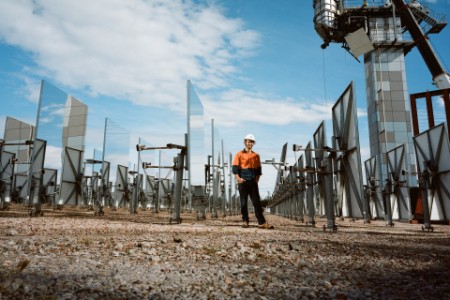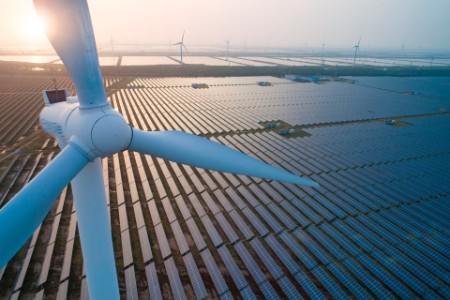
Chapter 1
How investors are thinking about ESG
Companies are being urged to curb emissions, enhance governance and improve disclosure.
Investors are adopting a range of strategies. Some exclude (or divest from) companies or industrial sectors they consider to be high-risk, or that breach norms such as the UN Global Compact. Some tilt portfolios toward companies that score better on ESG metrics or invest in sustainability-themed portfolios, such as companies specializing in climate solutions or clean water. Some stress active ownership, engaging with company management to encourage them to improve ESG performance, while others are seeking “impact” investments that deliver social or environmental outcomes as well as – or in favor of – financial returns. Many use a combination of approaches.
Certainly, the messages from investors to companies are increasingly clear. For example, Climate Action 100+ – an alliance of investors who manage more than US$40t, coordinated by five global investor networks, including the Institutional Investors Group on Climate Change (IIGCC) – is asking for companies to curb emissions, enhance governance and improve climate-related disclosures. It is engaging with 100 “focus companies” in the MSCI ACWI global equity indexes with the highest direct and indirect emissions, and an additional 61 firms that present high levels of climate risk or opportunity.
“Climate change is one of the most significant long-term risks facing investors,” says Stephanie Pfeifer, CEO of the IIGCC and a member of the global Climate Action 100+ steering committee. “We believe investors have a vital role to play in driving the low-carbon transition across the global economy. Investors can use collaborative engagement as a means of influencing positive change and protecting the long-term value of the assets they invest in on behalf of their beneficiaries.”
Specifically, the Climate Action 100+ initiative aims to fundamentally change corporate behavior, and can point to commitments secured from some of the world’s largest oil, gas and mining companies, which have agreed to enhance their climate change commitments in response to engagement campaigns by the initiative.
Investor engagement has also resulted in a number of companies reviewing their lobbying practices on climate change, whether through their trade associations or their direct advocacy with policymakers, says Pfeifer.
Specifically, the Climate Action 100+ initiative aims to fundamentally change corporate behavior, and can point to commitments secured from some of the world’s largest oil, gas and mining companies, which have agreed to enhance their climate change commitments in response to engagement campaigns by the initiative.
Allianz Global Investors is one of many investors calling on investee companies to disclose information about their approach to climate change using the framework proposed by the Task Force on Climate-related Financial Disclosures (TCFD). It says companies should report on their governance of climate risk, the metrics and targets they use, and how climate change is integrated into their strategies, among other things.
“Disclosure is often where companies fall down; they might be doing good things, but as an investor, if they’re not reporting on it, it’s hard to take a view,” says Kimon Demetriades, an ESG analyst at the investment arm of the German financial services group. The TCFD provides a “great framework” that encourages companies to publish consistent, comparable information, he adds.

Chapter 2
A changing paradigm for corporate ESG reporting
KPIs should show how resilient a business is and whether it is able to deliver its strategy.
The approach taken by the TCFD is emblematic of a shift in how leading investors are thinking about ESG, argues Johnston at EY. Rather than using ESG data as a “risk lens,” which paints an essentially backward-looking picture of performance against ESG key performance indicators (KPIs), investors are instead using it “as a lens to think about value creation … about how it enables an organization to deliver and sustain its business strategy and its value.”
“What we’re seeing is a shift from KPIs that talk about ESG performance – how well a company is doing in reducing its carbon footprint or at managing water scarcity, for example – to those KPIs that enable investors to understand how resilient a business is, or whether it is able to deliver its strategy,” Johnston says.
This means that companies have to take a broader view of KPIs, and look to track and disclose those that link the ESG agenda to the financial performance of the business, he continues. For example, KPIs should aim to demonstrate the value at risk from disruptions to the business from extreme weather or disrupted supply chains or pandemics, and should attempt to quantify the likely changes in demand for products and services as we shift to a more resilient low-carbon economy.
This is a challenging process in two regards, says Johnston. First, companies are “universally” grappling with how to identify the most meaningful scenarios of how ESG issues are likely to shape corporate strategy. These scenarios need to capture future regulation and physical exposures from ESG risks, as well as changes to their markets.
“Organizations need to select these scenarios based on where the risks and issues are within their business,” says Johnston.
Second, it can be challenging to translate non-financial indicators into financial metrics that companies can disclose. For example, a company may need to invest to reduce its carbon emissions to protect its operations against future carbon regulations. Alternatively, it could use that capital investment to improve the profitability of a product. “How do you compare those two capital investments?” Johnston asks. “There are ways to do so, but they require new approaches.”

Chapter 3
Climate change and the corporate response
How companies address climate risk will depend on the sector in which they operate.
While companies face an often-daunting range of ESG challenges, climate change is at the top of the agenda for many. Certainly, repeated surveys of signatories to the Principles for Responsible Investment have identified climate change as the No. 1 ESG concern.
The Brunel Pension Partnership, a £30b (US$37b) pool that manages the investments of 10 UK local authority pension funds, recently published a new climate change policy, which sets out its expectations for its investment managers and investee companies. It states that:
“We want the companies and other entities in which we invest and contract with to support the transition to the low-carbon economy, and to ensure that they are resilient to the unavoidable impacts of climate change.”
Brunel is a member of the Transition Pathway Initiative, a global effort by investors to assess how well companies are prepared for the transition to a low-carbon economy. “That provides companies with a very clear framework of what investors need,” says Faith Ward, Brunel’s Chief Responsible Investment Officer. It sets out expectations regarding disclosure, governance and target-setting.
We want to see that climate change is deeply embedded in business strategy … we want companies to show how long-term targets are integrated in the business, in capex plans, etc.
In big-picture terms, “we want to see there’s an acknowledgement of business risk – and emission-reduction targets are a first step,” she says. “Ultimately, we want to see that climate change is deeply embedded in business strategy … we want companies to show how long-term targets are integrated in the business, in capex plans, etc.”
Exactly how companies seek to address climate risk in their strategies will depend on the sector or sectors in which they operate; the approach taken by an energy-intensive industry will differ from that taken by a fast-moving consumer goods company, notes Johnston.
For some, a focus on energy use and sourcing can deliver steep emission reductions, through investments in energy efficiency improvements and decisions to source power from renewable energy. Some companies will be looking to carbon capture and storage to eliminate emissions from industrial processes. There is considerable potential to decarbonize transport fleets by switching to electric vehicles or hydrogen fuels.
For other companies, the focus will be on working with their supply chains to encourage suppliers to reduce their carbon intensity. While other firms are exploring investing in nature-based solutions to offset the emissions that remain after all cost-effective mitigation investments have been made.
However, companies should also consider how the response to climate change will reconfigure their markets, says Johnston. He gives the example of oil and gas companies whose climate strategies involve, among other things, a pivot toward renewable energy. This will result in deep-pocketed industrial giants joining a market hitherto dominated by a large number of small participants. “It will drive change in terms of partnerships, transactions, and different sources of finance for R&D,” he says.

Chapter 4
How institutional investors are turning to renewables
The stability of returns that can be generated by renewable energy infrastructure is compelling.
Institutional investors around the world are increasing the volume of capital they are allocating to renewable energy infrastructure as a means to hedge their climate exposure, according to investment managers.
In a report published last year, institutional investors surveyed by Octopus Investments said they planned to increase significantly the allocations of capital they direct to renewable energy, from 4.4% to 7.4% – representing US$210b. Among these investors, which collectively manage US$6.8t, 58% gave investing in line with ESG factors as the motivation to increase their investments in renewables.
“There is a lot of pressure coming from underlying beneficiaries to divest from fossil fuels and to reallocate this capital somewhere useful, such as towards clean energy,” says Henry Morgan, a sustainable investment associate at Foresight Group, a UK-based infrastructure and private equity investment manager. He also observes legal and regulatory pressure building on institutions to invest prudently, noting the growing risk attached to high-carbon investments.
“This pressure is continually increasing … and investors are beginning to understand the risk they face from stranded assets,” Morgan adds.
There is a lot of pressure coming from underlying beneficiaries to divest from fossil fuels and to reallocate this capital somewhere useful, such as towards clean energy.
In addition, the stability of returns that can be generated by real assets such as renewable energy infrastructure is proving compelling, he says. “The investment case around infrastructure has become more and more attractive. It has caused large institutions to reassess their fundamental asset allocation and, within real assets, the fact that renewables are low carbon and offer contracted revenues has resulted in increased investment in the space.”
Ward, at the Brunel Pension Partnership – which committed to make at least 35% of its £500m (US$614m) of first-cycle infrastructure allocations to renewables – says there is a high level of interest in the asset class from the pool’s member pension funds, which dictate Brunel’s asset allocation. “It’s about them looking to make a positive contribution to the energy transition in an economically sustainable way,” she adds.
In addition to this “top down” demand from clients, however, investments in renewables and related infrastructure – such as energy efficiency investment, power networks and low-carbon transport – are attractive from a more fundamental point of view, says Ward. “We see these as very good investments … and there’s been a strong robust pipeline of opportunities. It’s been a win-win.”
Summary
Climate change and other key ESG issues are now recognized as key determinants of a company’s future value creation. Institutional investors are demanding that businesses not only deliver financial performance, but also show how they make a positive contribution to society. As a result, firms are having to re-evaluate their corporate strategies to curb their emissions, enhance their governance and improve their climate-related disclosures.


